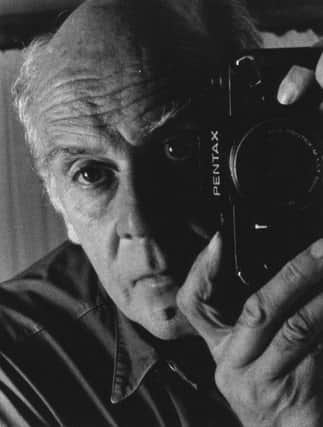Hastings national press photographer dies
This article contains affiliate links. We may earn a small commission on items purchased through this article, but that does not affect our editorial judgement.


Peter Johns passed away peacefully in his sleep on Saturday (March 11).
Born in South Wales, he started his career as an illustrator, before turning to photography.
Advertisement
Hide AdAdvertisement
Hide AdHaving studied illustration at Swansea College of Art, he was taken on by The South Wales Evening Post and Herald of Wales, to produce all their editorial and advertising work from 1950-1961.
The gift of a Rolleicord camera, and then a Rolleiflex, from an aunt revealed his talent for observation and composition and he started working for the same local newspapers as a photographer.
Collaborating with a journalist, Alan Road, Peter produced a series of features on Welsh miners that caught the attention of both The Observer and The Guardian newspapers and in 1965 Peter and his family – wife Valerie and daughters Susie and Lisa – relocated to London where he became one of three full-time staff photographers on The Guardian.
Peter was part of the new wave of British photojournalists including Ian Berry, Philip Jones-Griffiths, David Hurn and Don McCullin.
Advertisement
Hide AdAdvertisement
Hide AdHis work for The Guardian encompassed all areas of photojournalism. He handled coverage of news events – marches, demonstrations, elections and strikes – and in-depth features including drug addiction, poverty and homelessness.
Of particular note is his series on the Aberfan disaster in 1966 and its aftermath.
In between major events, however, he always contrived to cover anything to do with the arts, music and theatre and produced some stunning portraits of figures such as Anthony Quinn, Sam Wanamaker, Tennessee Williams, Meryl Streep, Max Wall, John Osborne, Rudolph Nureyev, and many others.
Peter always worked in black and white using Leica, Pentax and Minolta cameras, and made his own prints.
Advertisement
Hide AdAdvertisement
Hide AdDuring his time at The Guardian he also taught an evening class in photography at an adult education college, took production photographs at Greenwich Theatre, for front-of-house display, and contributed to a number of exhibitions including Four Artists and a Photographer, South London Art Gallery (1973), and Peter Johns Photographs, Greenwich Theatre Gallery (1979) and Woodlands Art Gallery, London (1980). His work has also been shown at The Photographers Gallery London, and The Photogallery St Leonards on Sea.
In 1981 Peter and his wife and younger daughter moved to Portugal, to the quiet Algarve countryside, where they set up and ran a photography workshop and a small country restaurant with a gallery space, and he continued working as a freelance, contributing to The Guardian and The Independent.
They returned to the UK in 2000, settling in Hastings Old Town where he began to concentrate on documentary and landscape work, including, for the first time, some colour material, and exhibited his new work at Rye Art Gallery in 2002, then had a retrospective exhibition at Whitstable Museum & Gallery in 2004, and a retrospective at The Guardian, King’s Place. In 2006 he donated his archive to the Scott Trust Foundation.
Peter and Valerie were together for more than 60 years.
She died in the summer 2014 and Peter never really recovered from this loss.
Advertisement
Hide AdAdvertisement
Hide AdOf his work, Peter once said: “The camera is essentially a notebook for recording instances in time and space, but above all for recording life as it presents itself. Photographing people, places, events – anything – must, for my part, be done without being contrived.
“Pictures are all around us, waiting to be taken. The difficult part is recognising them but the secret is not just to record but to select. The obvious cliché is avoided and instead a meaning or reason is conveyed without sacrificing realism.
“Working mainly in monochrome, there must be an awareness of dark against light and vice-versa, without the novelty of colour.
“Unlike the painter, who arranges the composition within the space of his canvas, the photographer must compose within the limits of his lens and viewfinder and select a suggestion, an idea, an interpretation – with very few second chances.”
Advertisement
Hide AdAdvertisement
Hide AdDon’t miss out on all the latest breaking news where you live.
Here are four ways you can be sure you’ll be amongst the first to know what’s going on.
1) Make our website your homepage at www.hastingsobserver.co.uk/ 2) Like our Facebook page at www.facebook.com/hastingsobserver
3) Follow us on Twitter @HastingsObs
4) Register with us by clicking on ‘sign in’ (top right corner). You can then receive our daily newsletter AND add your point of view to stories that you read here.
And do share with your family and friends - so they don’t miss out!
The Hastings Observer - always the first with your local news.
Be part of it.